A Two-Day Trip To Izu Oshima, Tokyo's Beautiful Island Of Camellias

Izu Oshima, the largest of Tokyo's outlying islands and the closest to the mainland, is famous for its scenic spots and beautiful camellias. This two-day trip itinerary plan includes some of the best places to visit and things to enjoy in Oshima.
Among the major eleven islands under the jurisdiction of Tokyo, Izu Oshima is the closest to the mainland and the easiest accessible from the city - in just two hours by jet ferry.
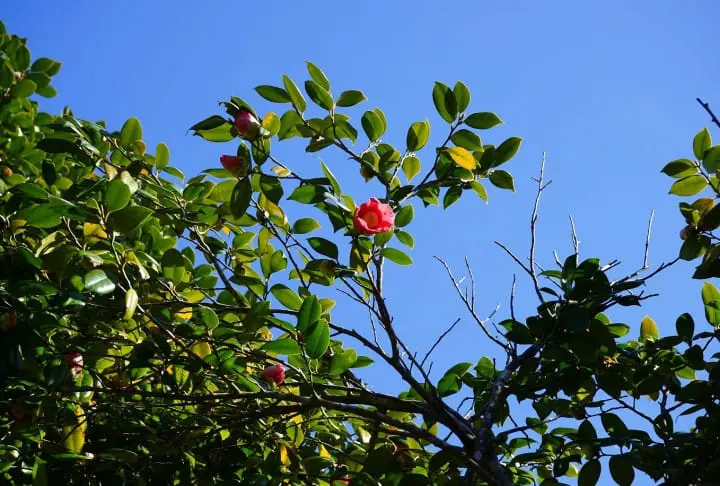
Best known for its camellias, which grace the island in the winter and early spring, Izu Oshima is a popular destination for both national and inbound travelers. It offers the occasion to discover another side of Tokyo - one that is slower-paced and closer to nature without depriving of comfort.
This article introduces a model itinerary for a two-day trip to Oshima, suggesting some of the best places to visit and fun things to do while on this island.
How to Purchase Ferry Tickets for Oshima
As soon as you decide when you want to travel to Oshima, check the ferry timetable and the ticket reservation page on the website of Tokai Kisen, the only company operating ferries between the mainland and Oshima. Tickets can be reserved either by phone, online or through a travel agency.

From Tokyo, the ferries toward Oshima depart from the Takeshiba Passenger Ship Terminal, which is located right near Takeshiba Station on the Yurikamome Line or at an 8-minute walking distance from Hamamatsucho Station (JR Yamanote Line or Keihin Tohoku Line).
On the day of the departure, your ticket is issued based on your reservation number. Arrive at least 30 minutes before the departure and retrieve your ticket from the ticket counter within the ferry terminal. A one-way ticket to Oshima costs 7,020 yen/person (*The fee may vary depending on the time of the year).
8:00 - Taking the Ferry to Izu Oshima
To make the most out of a two-day trip to beautiful Oshima, it's recommended to take the earliest ship departing for the island.
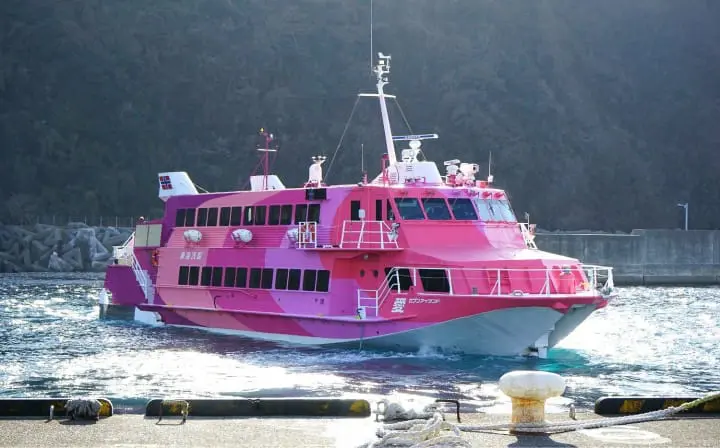
After issuing our tickets at the Takeshiba Passenger Ship Terminal and getting some snacks for the trip, we boarded the 8 AM ferry for Oshima. The name of our ship was "Ai" ("Love"). Ai is one of the four high-speed jet ferries operating between the mainland and Oshima.
As we found out on board, these ferries use jet engines that make it possible for the ship to be elevated above the water surface when in high-speed mode. For this reason, during the two-hour trip to Oshima, you'll be asked to stay in your seat with your seatbelt fastened.
Izu Oshima has two harbors - Motomachi Port and Okata Port. The port of arrival is decided each day on account of the weather conditions and sea currents.
Around 10:20, our ferry landed in Okata Port. After taking a deep breath of the island air, marveling at the camellias in bloom at every corner of the street and at the friendly, laid-back nature of the locals, we started our adventure on Oshima.
11:00 - Oshima Furusato Taikenkan - Camellia Oil Making Workshop
Found literally everywhere, camellias ("tsubaki" in Japanese) have deep connections to the daily life of the Oshima islanders. The tradition of making camellia oil is deeply rooted here. Originally used as a cooking ingredient, camellia oil is now an increasingly popular ingredient for cosmetics.

The best place to learn more about camellia oil and experience firsthand how it's made is the Oshima Furusato Taikenkan. This facility can be reached in about 8 minutes by taxi from Okata Port or 13 minutes by bus from Motomachi Port.
Oshima Furusato Taikenkan offers craft workshops such as camellia oil making and natural dyeing techniques.
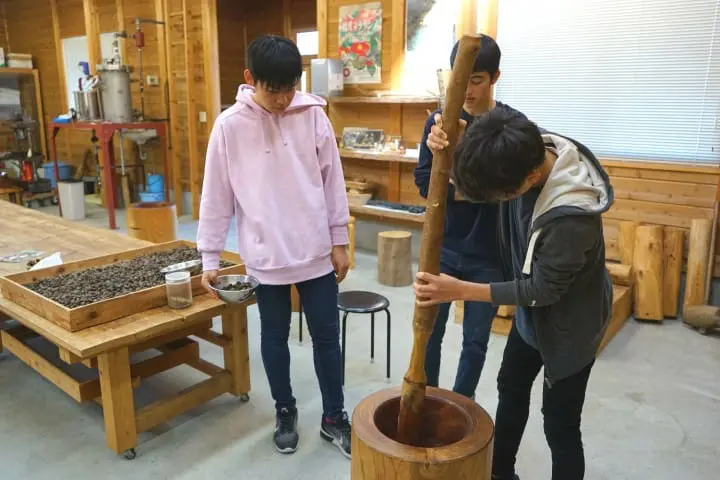
After a short explanation of the procedure, you get to experience all the steps of making camellia oil - from crushing the camellia seeds (the old way - in a mortar, and the modern way - using a machine), to steaming the crushed seeds and cold pressing them to obtain oil.
The freshly pressed oil is used on the spot to fry some leaves of ashitaba, another plant that is widely cultivated on Oshima. Tasting this simple dish, you'll notice the deep, pleasant aroma of the camellia oil. After the workshop, you even get to take home some of this oil as a souvenir!
The souvenir shop at the Furusato Taikenkan has a great selection of products made with camellia oil and charming craft items made in Oshima. Along with their excellent workshops, it is sure worth checking out.
Our suggestion for lunch is a dining place located near the Okata Port. You can reach it by taking the bus for Okata Port departing at 13:09 from the bus stop Furusato Taikenkan Iriguchi (*1).
*1... If you intend to use public transportation in Oshima, please be aware that local buses are available once an hour. If you miss one bus, you can catch the next one in one hour at the same bus stop.
13:20 - Delicious Seafood Lunch at Hama no Kaachan Meshi
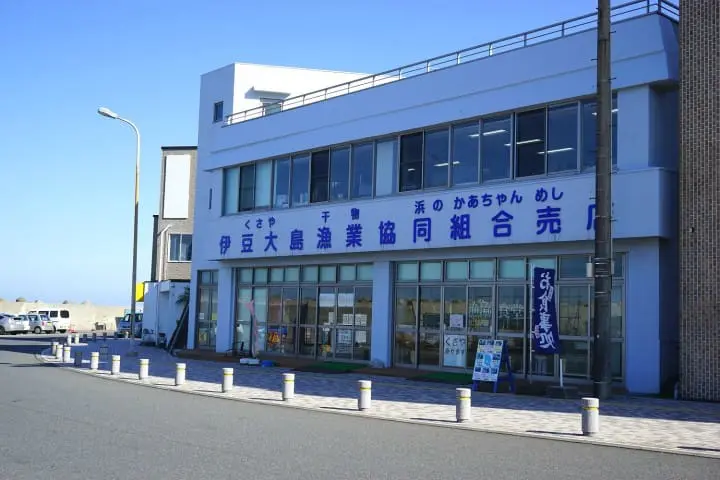
As you can guess, Oshima boasts delicious seafood. A great place to enjoy tasty seafood dishes is Hama no Kaachan Meshi, a dining place found right in front of the Okata Port passenger terminal building.
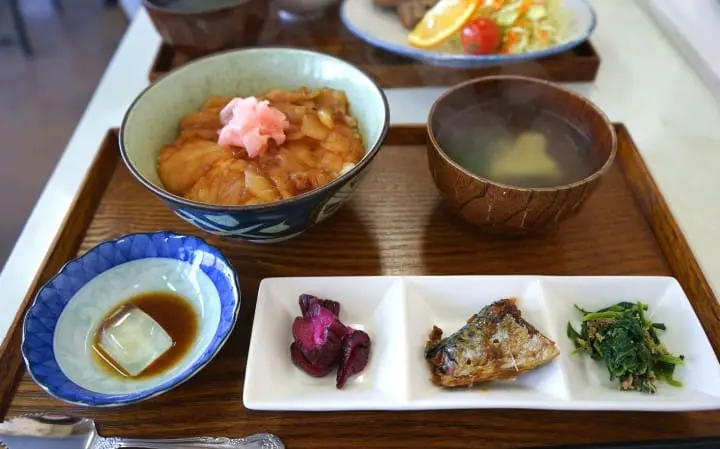
Bekko-don, a rice dish with fish topping, is one of their most popular items and one of the specialties of Oshima. "Bekko" refers to the glossy amber color of the fish that has been marinated in a special sauce made with island red pepper and soy sauce. If you don't know what to choose from their menu, take the bekko-don and you won't regret it! This dish, which will surprise you with its refreshing flavor, is really tasty and filling.
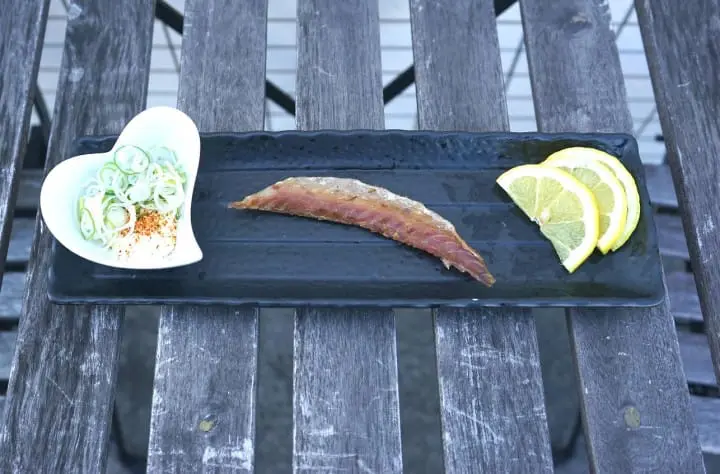
At Hama no Kaachan Meshi you can find another specialty of Oshima - kusaya, fish that is salted-dried and fermented. Notorious for its strong smell, kusaya is highly nutritious. On Oshima and the other Tokyo islands, it is a popular snack to enjoy with sake or shochu (distilled liquor). Do give it a try when visiting the islands.
Our next destination is Oshima Park, the main venue of the Izu Oshima Tsubaki Matsuri, or the Camellia Festival, which is held every year between the end of January and the end of March.
From Okata Port, take the 14:47 bus heading to "Oshima koen" and you will reach the park at 15:00.
15:00 - Tsubaki Matsuri - Relish Splendid Camellias in Oshima Park!
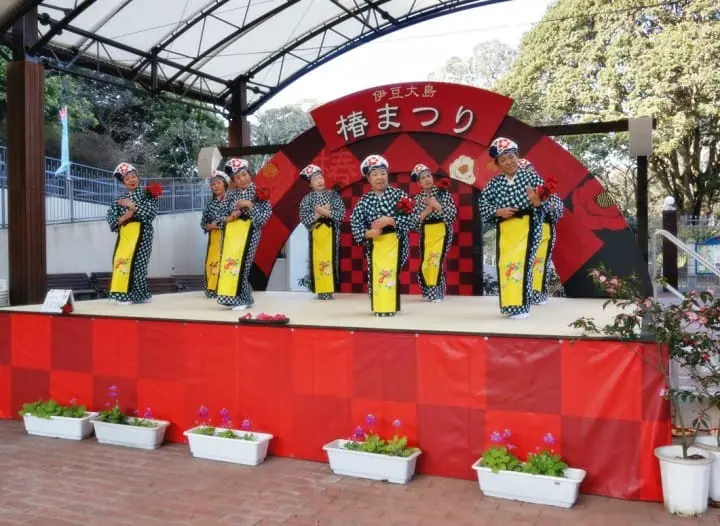
During the Tsubaki Matsuri, Oshima Park is the host of various events such as dance performances, a Camellia Queen beauty contest, and a temporary marche with food stalls and souvenir shops which are open every day until 15:30.
Highlights of Oshima Park, the Camellia Heaven
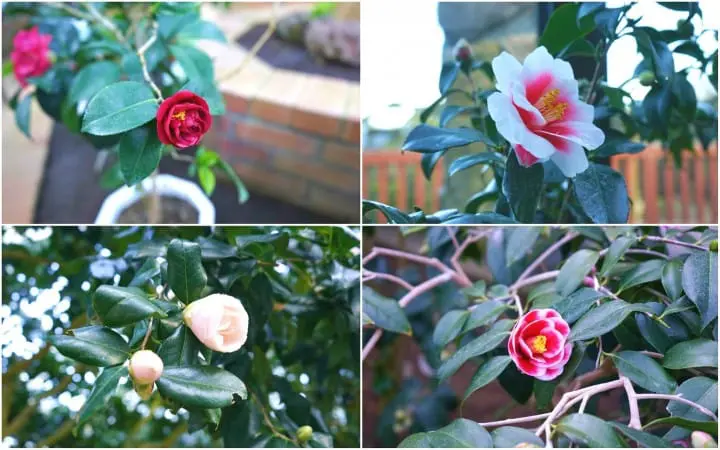
At Oshima Park, visitors can admire around one thousand different types of camellias which bloom from early winter to early spring in the garden and the large greenhouse. It is a world first-class camellia garden, with more than eight thousand camellia trees.
The Camellia Pavilion
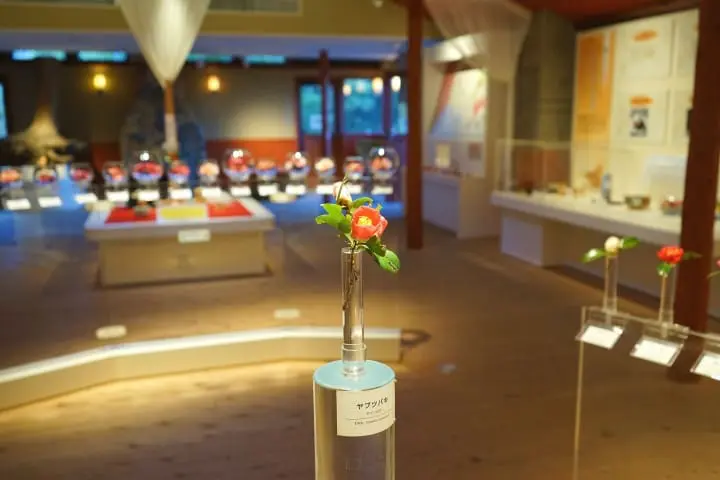
The Camellia Pavilion is an exhibition space with displays of dried camellia flowers and detailed explanations of the most popular types. During the blooming periods, real camellias are on display in delicate transparent containers.
In this room, visitors can see various art and craft objects related to camellias, which show just how dear this flower has been to the Japanese soul, being a part of the daily lives of people for centuries.
Oshima Park Zoo
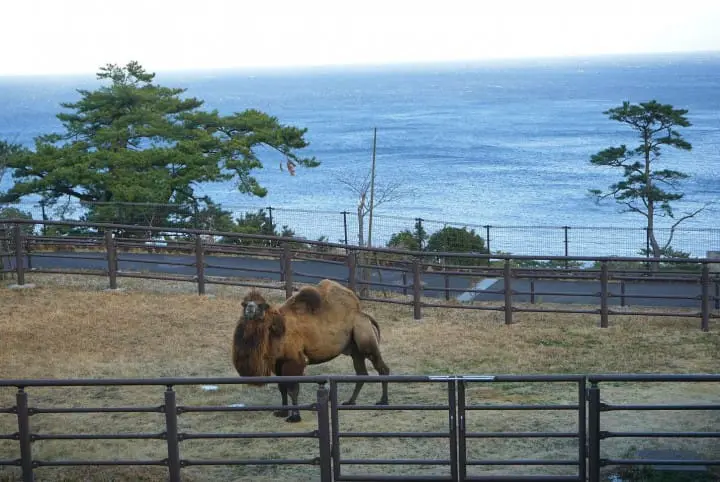
Oshima Park includes a wide zoological garden which is home to various types of animals and exotic birds. From camels, lesser pandas and giant turtles to flamingoes, peacocks and owls, there are many cute living creatures that visitors can see up close.
Visiting Oshima Park when the camellias are in bloom is an occasion to enjoy them in all their splendor. Nonetheless, the park is a great destination to visit at any time of the year. You'll be able to see not only camellias but also excellent exhibitions and rare animals that call Oshima home.
18:00 - Check-in at Hotel Shiraiwa

A resort island, Izu Oshima offers plenty of options when it comes to staying overnight. We recommend Hotel Shiraiwa, one of the well-established accommodation facilities on the island. Conveniently located near Motomachi Port, the hotel has both Japanese and western style rooms where guests can enjoy a comfortable stay.
Its excellent hot spring baths are a real blessing after a day of exploring the wonders of Oshima. Some of the high-quality amenity cosmetics available are original products of Hotel Shiraiwa made with camellia oil and can be purchased at their souvenir shops.

The highlight of a stay at Hotel Shiraiwa is the exquisite dinner course menu which consists of various dishes that are the pride of Oshima. Any visitor to the island will look forward to the dish called Tsubaki Fondue, which consists of shrimp, fish and vegetables dipped in a flour-based batter and deep-fried on the spot in camellia oil.
The Japanese style breakfast is just as refined and satisfying as the dinner. Staying overnight at Hotel Shiraiwa will be a most pleasant way to enjoy the best of what Oshima has to offer.
9:00 - Habu Port - A Must-See Scenic Spot in Oshima
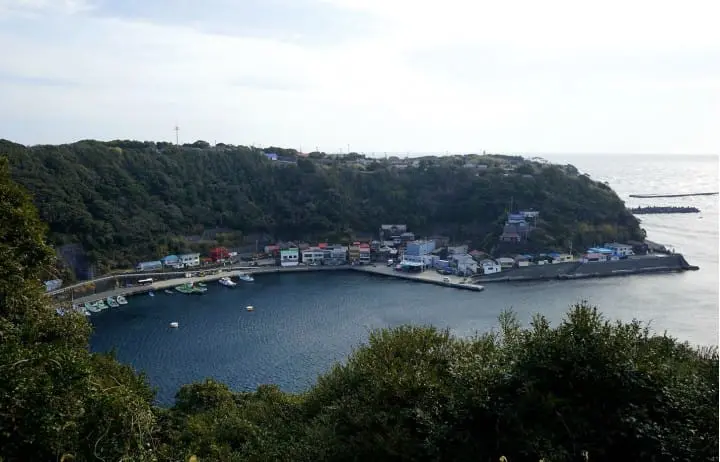
One of the most beautiful areas in Oshima is Habu Port, a town area located on the south-eastern side of the island. From Motomachi Port, take the 8:30 bus on the Habu Minato line. Around 9:06, you'll be reaching the bus stop Habu Minato Miharashi-dai, a panorama observatory point where you can enjoy a fabulous view over Habu Port.
After taking in the sights and the fresh morning island air, head downhill. As soon as you reach the main road, head to the left in the direction of Habu Port, which is located at about 15 minutes walking distance. This part of the island is very picturesque and you'll most surely stop from time to time to take pictures of the townscape and of the bay.
9:20 - Palais La Mer - Discover the Treasures of the Sea
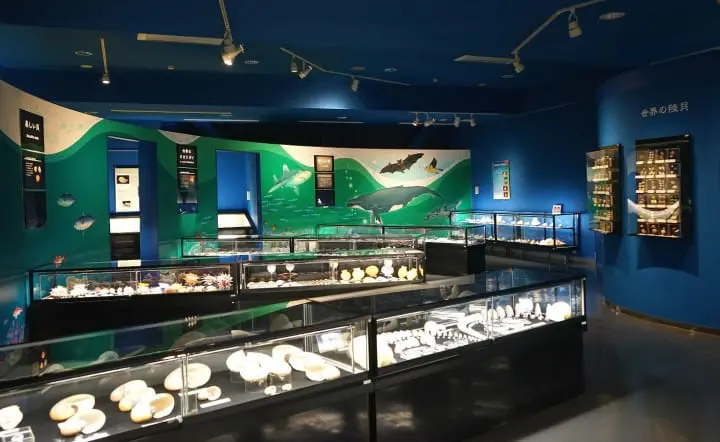
On your way to Habu Port you will encounter Palais la Mer, Oshima's shellfish museum. Visitors can see here an impressive collection of shellfish from all around the world - around 4000 types in total.
The exhibition room on the first floor is designed to look like the world under the sea. Some of the rarest and most precious items are displayed here.
The two exhibition rooms on the second floor give even more insights regarding the shellfish families and categories. From shellfish that are big enough for a baby to lie in them to shellfish that are as small as a grain of sand, here you can see many various types of shellfish from all around the world.
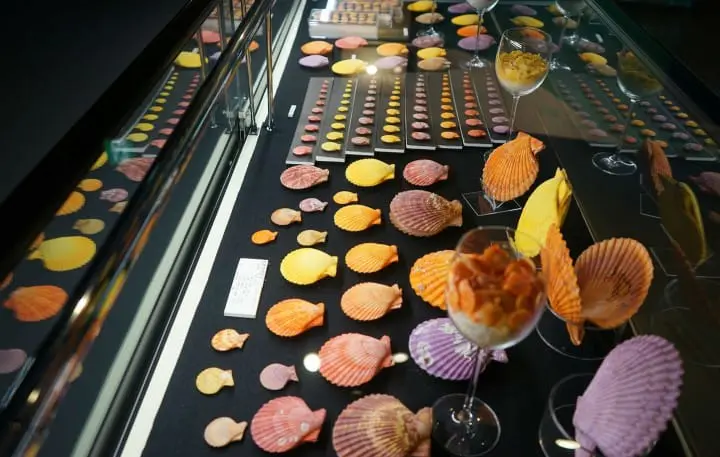
The displays in Palais la Mer are extremely attractive, highlighting some of the wonders of the sea. You'll be enraptured at the sight of so many different shapes and colors. This museum will most surely bring you the joy of having discovered a less known but fascinating side of the world.
10:30 - Odoriko no Sato Museum and Habu Port
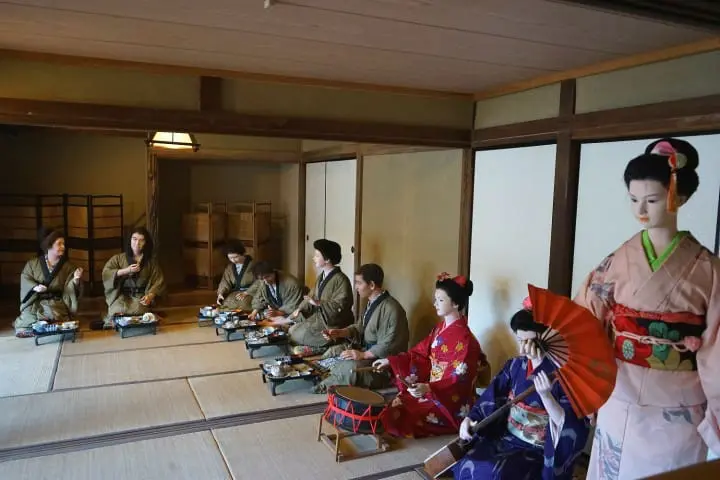
The beautiful town around Habu Port provides the occasion for truly memorable pictures. While most of the buildings are new, the townscape preserves the atmosphere of the past when the area flourished as a fishing port.
One of the oldest buildings in Habu Port is the Odoriko no Sato Museum, which used to be an inn called Minatoya Ryokan in the old days. This inn became famous after being mentioned in "The Dancing Girl of Izu", a novel by the Nobel Prize-winning writer Yasunari Kawabata.
The atmosphere of the inn is recreated through lively displays. Visiting this facility will be an occasion to get a glimpse of the culture and customs that flourished in Izu Oshima.
11:30 - Lunch at Minato-zushi
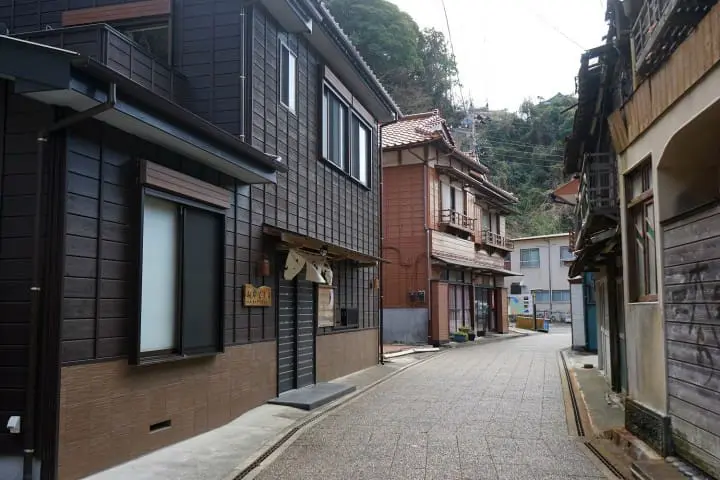
On the same street with the museum, you can find Minato-zushi, a sushi restaurant with the reputation of providing some of the best sushi in Izu Oshima.
Fish caught off the shore of the island is brought in at Minato-zushi the same day and reaches the table fresh.
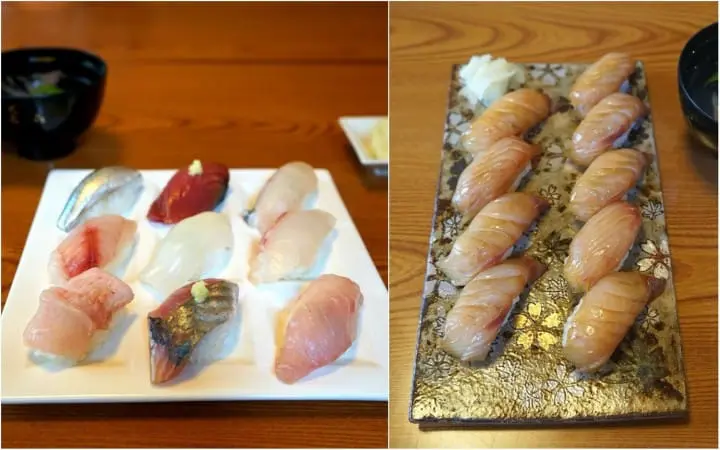
We recommend you try the Jizakana Sushi (1750 yen), made with nine types of fish from the sea around Oshima, and the Bekko-zushi (1750 yen), which is made with white fish marinated in soy sauce after a traditional recipe that is a specialty of Oshima.
After enjoying your lunch at Minato-zushi, try to catch the 12:28 bus headed to Motomachi Port. At 12:55 you'll be reaching the bus stop called "Kazan hakubutsukan-mae", which is located right in front of our next recommended destination.
12:45 - Izu Oshima Museum of Volcanoes
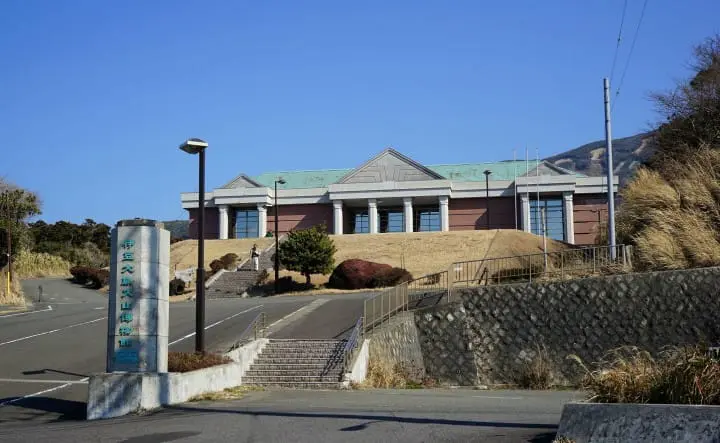
The Izu Oshima Museum of Volcanoes is a facility dedicated to the subject of the Earth's volcanic activity.
A volcanic island itself, Izu Oshima has gone through the eruption of Mount Mihara several times in its history. The eruption of the volcano in 1986 led to the temporary evacuation of the Oshima citizens. In the first-floor exhibition room, visitors can learn more about the 1986 eruption, as well as about the features of Mount Mihara and the other volcanoes that make the Izu-Ogasawara Archipelago.
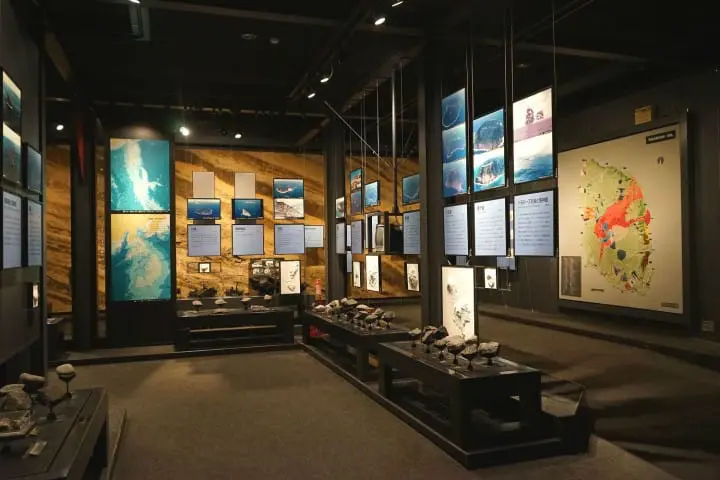
The second-floor exhibition rooms contain information on all the major volcanoes in the world. The displays related to large volcanic eruptions in world history are particularly impressive as they show just how immense is the power lying under the surface of the earth.
Another highlight of the display is the vertical section through Oshima's soil, which shows the various layers of earth, ash, and magma that make up the ground of this island. A visit to this museum is a great occasion to get some deeper knowledge about Oshima and the Japanese archipelago itself.
15:10 - Back to the City
The last ferry headed to mainland Tokyo departs at 15:10. The port of departure is decided every day in the morning. You can inquire about it at the hotel, at any local shop or in the bus. The locals will be able to tell you from which harbor will the ferry depart from.
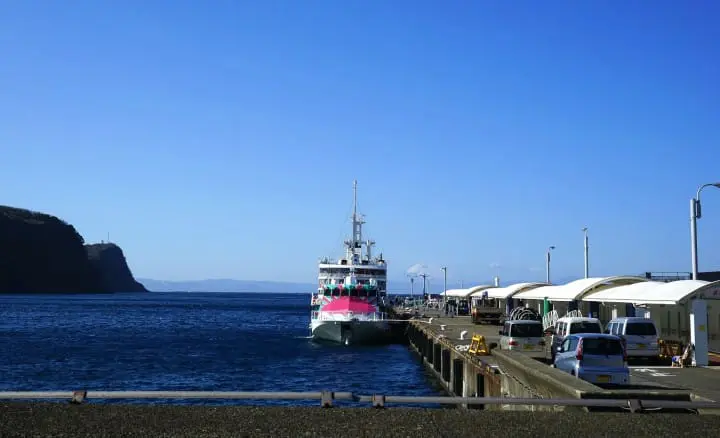
On the day of our visit, the ferry headed to Tokyo departed from Okata Port. Because there are several ferries departing toward various destinations, please line up 15 minutes before departure time on the platform corresponding to your ferry.
Have a Great Time in Beautiful Oshima!
A trip to Izu Oshima is an opportunity to experience a different time flow than in the heart of the metropolis while still in Tokyo. The splendid views, the beauty of the camellias, the delicious seafood, and the excellent museums you will find on this island will provide the occasion for a truly relaxing and at the same time stimulating holiday.
Izu Oshima Route Summary
Day One: Takeshiba Passenger Ship Terminal → Okata Port/Motomachi Port → Oshima Furusato Taikenan → Lunch at Hama no Kaachan Meshi → Oshima Parl → Hotel Shiraiwa
Day Two: Hotel Shiraiwa → Motomachi Port → Habu Minato Miharashi-dai → Palais la Mer → Habu Port → Odoriko no Sato Museum → Lunch at Minato-zushi → Izu Oshima Museum of Volcanoes → Okata Port/Motomachi Port → Takeshiba Passenger Ship Terminal
Transportation expenses: round-trip ferry ticket - 14,040 yen (*the fees may vary depending on the time of the year), local bus tickets - around 3000 yen for two days (or purchase a 2-day bus ticket which is priced at 3000 yen).
Accommodation expenses: around 12,000 yen (*prices vary at each facility and depending on the season)
Camellia oil workshop: 2160 yen
Lunch, snacks, souvenirs etc: around 5000 yen.
Supported by Tokyo Convention&Visitors Bureau
Web content editor and travel writer at MATCHA.












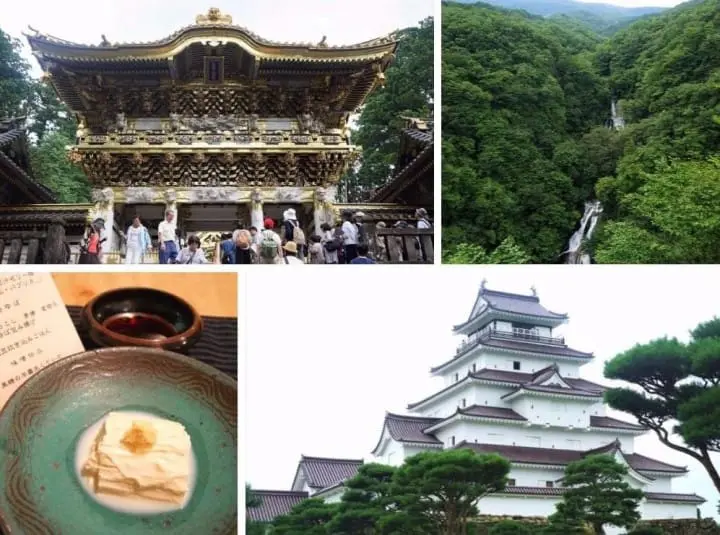


























![[Coupon Available] Attention Overseas Winter Sports Fans! Nagano's Sports Depot Has Evolved](https://resources.matcha-jp.com/resize/720x2000/2026/01/05-254819.webp)
![[2 hours from Tokyo ] 10 Quiet and Breathtaking Views of Mount Fuji in Yamanashi Hokuto City , Yamanashi - Part 2](https://resources.matcha-jp.com/resize/720x2000/2025/12/16-253037.webp)

![[Reopening in March 2026] Ikoma Sanjo Amusement Park Park, 45 minutes from Osaka , with free admission](https://resources.matcha-jp.com/resize/720x2000/2024/08/28-194409.webp)